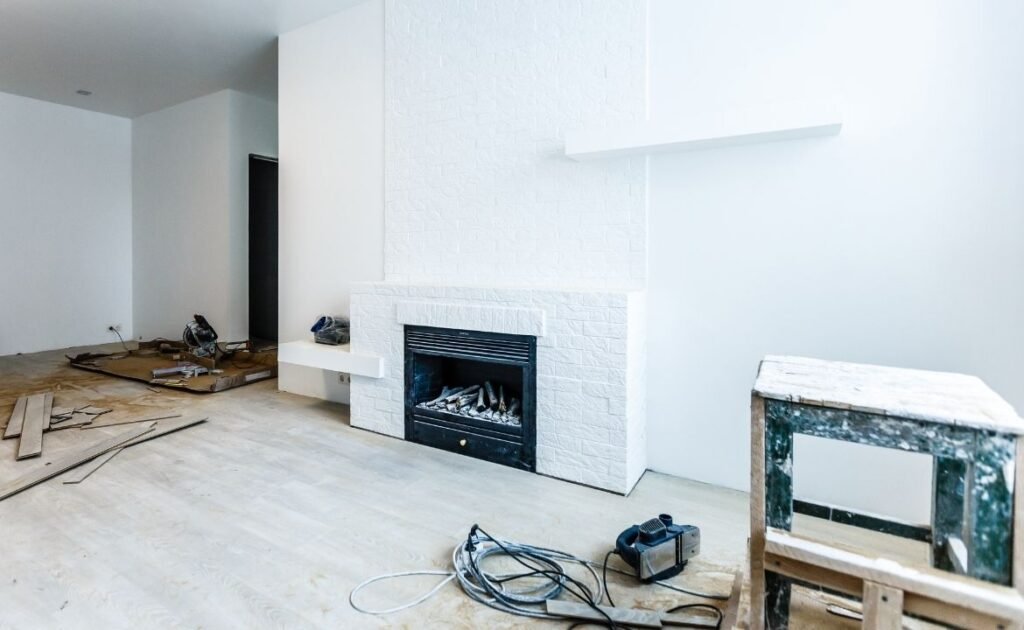Unexpected home failures don’t give warnings or respect schedules, and the cost of waiting can escalate fast. In Madison, AL, where seasonal storms, humidity, and aging infrastructure collide, emergency home repair decisions often carry long-term consequences. Knowing what is urgent, what is risky, and who to call first can change the outcome of the repair and the expense that follows.
Knowing Which Repairs Can’t Wait Until Morning
Certain failures are immediately unsafe, not just inconvenient. Active water intrusion, burning smells, rapidly spreading ceiling stains, natural gas odors, and sparking outlets fall into the “stop everything” category. These issues compound by the minute. A leak left running behind a wall for six hours can saturate framing and insulation, doubling repair layers before daylight. A good rule: anything that worsens without intervention should be treated as same-day.
Many homeowners misjudge urgency based on visibility. Just because a problem is hidden behind drywall doesn’t mean it’s slow. Internal damage spreads silently, often impacting structural and electrical systems long before paint or flooring shows the effect. For fast-tracked help, residents often search home repair near me when minutes matter, not days.
Spotting Structural Warning Signs Before the Situation Escalates
Structural issues don’t always fail dramatically at first. They whisper before they break. Warning signs include diagonal cracks around door frames, sudden difficulty latching interior doors, separation between walls and baseboards, new exterior brick stair-stepping cracks, or floors that slope in spots that used to sit level. Another sign that often slips through the cracks—literally—is movement noise. Clicking, popping, or shifting sounds in walls during temperature drops can mean framing under stress. Madison general contractors see this before storms when humidity swings cause expansion pressure in older builds. Early attention here prevents high-risk failures later.
Understanding Water Source Shutoffs Before a Leak Spreads
Water damage control is 30% repair and 70% reaction time. The fastest fix a homeowner can make is stopping the source. Every home has three key water control points: the interior main shutoff valve, fixture-specific shutoffs under sinks and toilets, and the exterior street-side meter valve. Knowing their locations saves thousands in secondary damage.
Stopping a leak isn’t the same as solving it. Once water is off, containment and assessment become priorities—especially behind walls, under cabinets, and beneath flooring. Emergency teams including a general contractor in Madison AL often begin diagnostic entry points early to prevent trapped moisture from turning into mold or swelling structural materials.
Identifying Load-bearing Risks When Cracks Start to Form
Cracks tell different stories depending on direction, size, and location. Thin vertical drywall cracks are often cosmetic. Horizontal cracks, widening wall joints, ceiling seam splits, or cracks paired with dips in the floor usually indicate load movement. Those deserve immediate evaluation. Load-bearing risks also show up above openings—windows, archways, and garage doors. Stress in these areas can point to shifting headers or foundation movement. In emergency calls, remodeling contractors in Madison AL check those zones first because failure there affects the structural grid of the home, not just one surface.
When Temporary Fixes Help and When They Make Things Worse
Temporary patches are helpful when they stabilize a hazard without hiding evidence. Placing a bucket under a leak, boarding a broken window, or cutting electricity to a single room prevents secondary hazards. These buys time without interfering with diagnosis.
Fixes that plug symptoms without solving pressure sources can backfire. Sealing a leak without drying the cavity, taping a crack that’s actively widening, or spraying sealant foam around electrical areas adds risk and can erase signs professionals rely on to trace the true failure origin. Emergency repair is mitigation first, repair plan second.
Recognizing Electrical Issues That Demand Same-day Action
Electricity rarely gives a second chance. Warm outlet plates, flickering lights across multiple rooms, breakers that won’t reset, buzzing in wall cavities, or charred plastic smells need same-day investigation. These symptoms indicate resistance, arcing, or overload inside the system.
Electrical collateral damage can spread fast. A single overheating connection point can melt insulation off adjacent wiring, affect nearby circuits, and ignite structural materials. While remodeling near me is often searched for planned upgrades, true emergency electrical work prioritizes de-energizing risk zones before any cosmetic repair even begins.
Material Shortages and How They Affect Emergency Timelines
Emergency repair timelines aren’t shaped only by labor—they are also dictated by supply chain reality. Structural lumber, specialty fasteners, matching exterior materials, and HVAC components still fluctuate in availability. Homeowners sometimes expect instant replacements for parts that require ordering, shipping, or permit-approved equivalents.
Contractors with strong supplier networks secure replacement materials faster than those who buy case-by-case. Project pacing then becomes strategic: stabilizing the home immediately, installing temporary protective measures, and scheduling permanent material replacement in sequence without slowing safety progress.
Choosing a Contractor Based on Response Capability, Not Convenience
Emergencies require speed, coordination, and structure-first thinking. Choosing the closest name in a search for general contractors near me isn’t always the best option. Response ability, crew availability, triage method, and experience with high-risk failure all matter more than proximity.
Effective emergency contractors mobilize quickly, communicate damage priorities clearly, and address root causes instead of symptoms. They also transition smoothly from emergency stabilization to long-term repair without switching teams mid-stream. For Madison homeowners needing rapid, dependable emergency repair execution, Hoover General Contractors offers structured response services built to protect properties when timing matters most.
